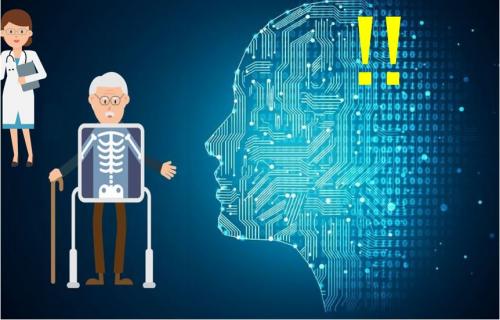
A new AI system can reduce the processing time for abnormal chest X-rays dramatically. This means that the radiologist can offer an opinion sooner. The AI can cut the average delay from eleven days to fewer than three days.
Health care professionals perform chest X-rays to monitor a wide range of conditions that affect soft tissues and the lungs. They are also performed to monitor the lungs and heart.
Researchers at the University of Warwick’s WMG (Warwick Manufacturing Group), St Thomas’ Hospital, and Guy’s Hospital wrote about their work in the journal Radiology (citation below).
AI (artificial intelligence) refers to software that makes computers or robots think and behave like humans. Some experts say that it must perform at least as well as a human for it to be AI.
AI recognizes abnormalities in X-rays
They extracted a dataset of 500,000 anonymized adult chest X-rays and developed an AI system for computer vision. They designed the AI so that it could recognize X-ray image abnormalities and suggest when to report these exams to a radiologist.
While they were creating the AI system, the researchers developed a Natural Language Processing (NLP) algorithm. The algorithm could read a radiological report and understand reporting radiologists’ findings. It subsequently inferred the priority levels of the X-rays.
They applied their algorithm to the historical X-rays, which generated many training radiographs (X-rays). The training exams allowed the AI system to understand which visual patterns in radiographs were predictive of their urgency level.
The team found that the AI detected normal chest X-rays with a positive and negative predicted value of 73% and 99% respectively. The AI also prioritized abnormal radiographs rapidly so that they could receive an expert radiologist opinion much sooner.
AI improved workflow and workforce efficiency
Prof. Giovanni Montana, from WMG at the University of Warwick, said:
“Artificial intelligence led reporting of imaging could be a valuable tool to improve department workflow and workforce efficiency. The increasing clinical demands on radiology departments worldwide has challenged current service delivery models, particularly in publicly-funded healthcare systems.”
“It is no longer feasible for many Radiology departments with their current staffing level to report all acquired plain radiographs in a timely manner, leading to large backlogs of unreported studies. In the United Kingdom, it is estimated that at any time there are over 300,000 radiographs waiting over 30 days for reporting.”
“The results of this research shows that alternative models of care, such as computer vision algorithms, could be used to greatly reduce delays in the process of identifying and acting on abnormal X-rays – particularly for chest radiographs which account for 40% of all diagnostic imaging performed worldwide. The application of these technologies also extends to many other imaging modalities including MRI and CT.”
Citation
“Automated Triaging of Adult Chest Radiographs with Deep Artificial Neural Networks,” Mauro Annarumma*, Samuel J. Withey, Robert J. Bakewell, Emanuele Pesce, Vicky Goh, and Giovanni Montana. Radiology. Published Online: Jan 22 2019.

